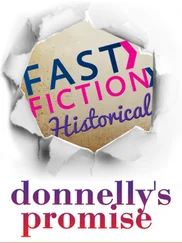Ignatius Donnelly - Antediluvian world
Здесь есть возможность читать онлайн «Ignatius Donnelly - Antediluvian world» весь текст электронной книги совершенно бесплатно (целиком полную версию без сокращений). В некоторых случаях можно слушать аудио, скачать через торрент в формате fb2 и присутствует краткое содержание. Жанр: Старинная литература, на русском языке. Описание произведения, (предисловие) а так же отзывы посетителей доступны на портале библиотеки ЛибКат.
- Название:Antediluvian world
- Автор:
- Жанр:
- Год:неизвестен
- ISBN:нет данных
- Рейтинг книги:5 / 5. Голосов: 1
-
Избранное:Добавить в избранное
- Отзывы:
-
Ваша оценка:
- 100
- 1
- 2
- 3
- 4
- 5
Antediluvian world: краткое содержание, описание и аннотация
Предлагаем к чтению аннотацию, описание, краткое содержание или предисловие (зависит от того, что написал сам автор книги «Antediluvian world»). Если вы не нашли необходимую информацию о книге — напишите в комментариях, мы постараемся отыскать её.
Antediluvian world — читать онлайн бесплатно полную книгу (весь текст) целиком
Ниже представлен текст книги, разбитый по страницам. Система сохранения места последней прочитанной страницы, позволяет с удобством читать онлайн бесплатно книгу «Antediluvian world», без необходимости каждый раз заново искать на чём Вы остановились. Поставьте закладку, и сможете в любой момент перейти на страницу, на которой закончили чтение.
Интервал:
Закладка:
The same similarity of form exists in the bronze knives from Denmark and Switzerland, as represented in the illustrations on p. 254.
In the central figure we have a representation of an Egyptian-looking man holding a cup before him. We shall see, as we proceed, that the magnetic needle, or “mariner’s compass,” dates back to the days of Hercules, and that it consisted of a bar of magnetized iron floating upon a piece of wood in a cup. It is possible that in this ancient relic of the Bronze Age we have a representation of the magnetic cup. The magnetic needle must certainly have been an object of great interest to a people who, through its agency, were able to carry on commerce on all the shores of Europe, from the Mediterranean to the Baltic. The second knife represented above has upon its handle a wheel, or cross surrounded by a ring, which, we shall see here after, was pre-eminently the symbol of Atlantis.
If we are satisfied that these implements of bronze were the work of the artisans of Atlantis—of the antediluvians—they must acquire additional and extraordinary interest in our eyes, and we turn to them to earn something of the habits and customs of “that great, original, broad-eyed, sunken race.”
We find among the relics of the Bronze Age an urn, which probably gives us some idea of the houses of the Atlanteans: it is evidently made to represent a house, and shows us even the rude fashion in which they fastened their doors. The Mandan Indiana built round houses very much of this appearance.
The museum at Munich contains a very interesting piece of pottery, which is supposed to represent one of the lake villages or hamlets of the era when the people of Switzerland dwelt in houses erected on piles driven into the bottom of the lakes of that country. The accompanying illustration represents it. The double spiral ornament upon it shows that it belongs to the Bronze Age.
Among the curious relics of the Bronze Age are a number of razor-like knives; from which we may conclude that the habit of shaving the whole or some part of the face or head dates back to a great antiquity. The illustrations below represent them.
These knives were found in Denmark. The figures upon them represent ships, and it is not impossible that their curious appendages may have been a primitive kind of sails.
BRONZE
RAZOR-KNIVES
.
An examination of the second of these bronze knives reveals a singular feature: Upon the handle of the razor there are ten series of lines; the stars in the sky are ten in number; and there were probably ten rings at the left-hand side of the figure, two being obliterated. There were, we are told, ten sub-kingdoms in Atlantis; and precisely as the thirteen stripes on the American flag symbolize the thirteen original States of the Union, so the recurrence of the figure ten in the emblems upon this bronze implement may have reference to the ten subdivisions of Atlantis.
The large object in the middle of this ship may be intended to represent a palm-tree-the symbol, as we shall see, in America, of Aztlan, or Atlantis. We have but to compare the pictures of the ships upon these ancient razor-knives with the accompanying representations of a Roman galley and a ship of William the Conqueror’s time, to see that there can be no question that they represented the galleys of that remote age.
They are doubtless faithful portraits of the great vessels which Plato described as filling the harbors of Atlantis.
SHIP
OF
WILLIAM
THE
CONQUERER
.
We give on page 258 a representation of a bronze dagger found in Ireland, a strongly-made weapon. The cut below it represents the only implement of the Bronze Age yet found containing an inscription. It has been impossible to decipher it, or even to tell to what group of languages its alphabet belongs.
It is proper to note, in connection with a discussion of the Bronze Age, that our word bronze is derived from the Basque, or Iberian broncea, from which the Spanish derive bronce, and the Italians bronzo. The copper mines of the Basques were extensively worked at a very early age of the world, either by the people of Atlantis or by the Basques themselves, a colony from Atlantis. The probabilities are that the name for bronze, as well as the metal itself, dates back to Plato’s island.
I give some illustrations on pages 239 and 242 of ornaments and implements of the Bronze Age, which may serve to throw light upon the habits of the ancient people. It will be seen that they had reached a considerable degree of civilization; that they raised crops of grain, and cut them with sickles; that their women ornamented themselves with bracelets, armlets, earrings, finger-rings, hair-pins, and amulets; that their mechanics used hammers, adzes, and chisels; and that they possessed very fair specimens of pottery. Sir John Lubbock argues (“Prehistoric Times,” pp. 14, 16, etc.): “A new civilization is indicated not only by the mere presence of bronze but by the beauty and variety of the articles made from it. We find not only, as before, during the Stone Age, axes, arrows, and knives, but, in addition, swords, lances, sickles, fish-hooks, ear-rings, bracelets, pins, rings, and a variety of other articles.”
If the bronze implements of Europe had been derived from the Phoenicians, Greeks, Etruscans, or Romans, the nearer we approached the site of those nations the greater should be the number of bronze weapons we would find; but the reverse is the case. Sir John Lubbock (“Prehistoric Times,” p. 20) shows that more than three hundred and fifty bronze swords have been found in Denmark, and that the Dublin Museum contains twelve hundred and eighty-three bronze weapons found in Ireland; “while,” he says, “I have only been able to hear of six bronze swords in all Italy.” This state of things is inexplicable unless we suppose that Ireland and Denmark received their bronze implements directly from some maritime nation whose site was practically as near their shores as it was to the shores of the Mediterranean. We have but to look at our map on page 43, ante, to see that Atlantis was considerably nearer to Ireland than it was to Italy.
The striking resemblance between the bronze implements found in the different portions of Europe is another proof that they were derived from one and the same source-from some great mercantile people who carried on their commerce at the same time with Denmark, Norway, Ireland, Spain, Greece, Italy, Egypt, Switzerland, and Hungary. Mr.
Wright (“Essays on Archaeology,” p. 120) says, “Whenever we find the bronze swords or celts,
VASES
FROM
MOUNDS
IN
THE
MISSISSIPPI
VALLEY
.
whether in Ireland, in the far west, in Scotland, in distant Scandinavia, in Germany, or still farther east, in the Sclavonic countries, they are the same—not similar in character, but identical.”
Says Sir John Lubbock (“Prehistoric Times,” p. 59), “Not only are the several varieties of celts found throughout Europe alike, but some of the swords, knives, daggers, etc., are so similar that they seem as if they must have been cast by the same maker.”
What race was there, other than the people of Atlantis, that existed before the Iron Age-before the Greek, Roman, Etruscan, and Phoenician—that was civilized, that worked in metals, that carried on a commerce with all parts of Europe? Does history or tradition make mention of any such?
We find a great resemblance between the pottery of the Bronze Age in Europe and the pottery of the ancient inhabitants of America. The two figures on page 260 represent vases from one of the mounds of the Mississippi Valley. Compare them with the following from the lake dwellings of Switzerland:
VASES
FROM
SWITZERLAND
.
It will be seen that these vases could scarcely stand upright unsupported; and we find that the ancient inhabitants of Switzerland had circles or rings of baked earth in which they placed them when in use, as in the annexed figure. The Mound Builders used the same contrivance.
Читать дальшеИнтервал:
Закладка:
Похожие книги на «Antediluvian world»
Представляем Вашему вниманию похожие книги на «Antediluvian world» списком для выбора. Мы отобрали схожую по названию и смыслу литературу в надежде предоставить читателям больше вариантов отыскать новые, интересные, ещё непрочитанные произведения.
Обсуждение, отзывы о книге «Antediluvian world» и просто собственные мнения читателей. Оставьте ваши комментарии, напишите, что Вы думаете о произведении, его смысле или главных героях. Укажите что конкретно понравилось, а что нет, и почему Вы так считаете.












